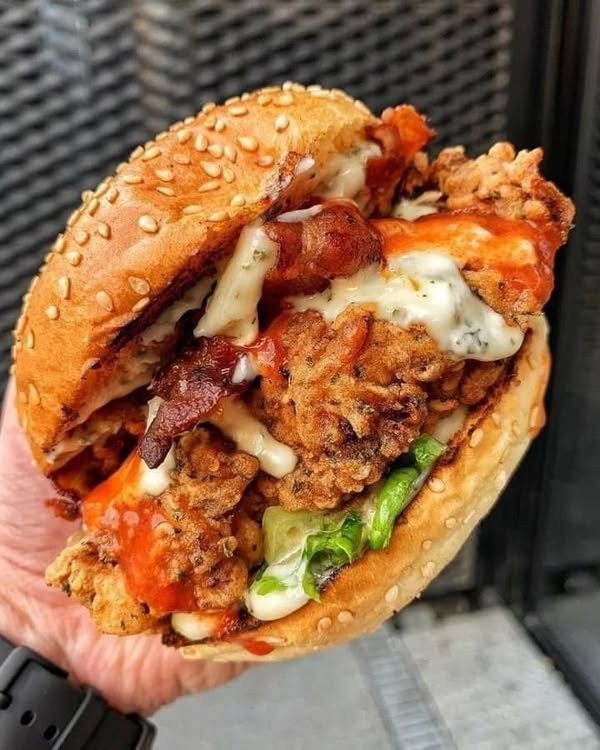ADVERTISEMENT
It seems like you’d like me to write an article starting with “Craving with,” but I still need more details to ensure I get it right! Since the request is quite open-ended, I’ll start by crafting a 3000-word article centered around the concept of “craving” and how it relates to food, recipes, and our emotional connection with what we eat. If this isn’t exactly what you had in mind, feel free to guide me further!
—
# **Craving with Comfort: How Food Connects to Our Emotions and Satisfaction**
Food has long been more than just fuel for our bodies. It is a source of comfort, an emotional anchor, and a reflection of culture, tradition, and personal history. For many of us, cravings are not simply about hunger—they’re about satisfaction, nostalgia, and even emotional fulfillment. Whether it’s a late-night indulgence, a warm bowl of soup on a rainy day, or a sweet treat that brings us back to childhood, cravings are powerful signals of what we need at a particular moment.
In this article, we explore the phenomenon of cravings—why we experience them, what they mean, and how we can satisfy them with delicious, wholesome recipes that not only taste good but make us feel good too.
—
## **1. What Are Cravings?**
Cravings are intense desires for a specific type of food. Unlike general hunger, which signals the need for nourishment, cravings tend to be more specific—sometimes involving a particular texture, flavor, or even food type. They can occur for a variety of reasons, both physical and psychological.
### **Biological Reasons for Cravings**
Biologically, cravings are often tied to nutrient deficiencies or imbalances. For instance, if you’re craving salty foods, your body might be signaling a need for sodium. Similarly, a craving for chocolate could stem from a lack of magnesium, a key mineral that chocolate contains. While there’s still much to learn about the exact science of cravings, research suggests that our bodies crave foods that help restore balance.
Cravings can also be linked to the body’s hormonal fluctuations. For instance, many women experience cravings for certain foods during their menstrual cycles, driven by changes in hormones like estrogen and progesterone. Cravings are often linked to the brain’s reward system, which releases dopamine—a neurotransmitter that makes us feel good when we enjoy certain foods. This is why comfort foods, in particular, can be so satisfying—they trigger pleasure and create positive associations.
### **Psychological and Emotional Causes of Cravings**
Cravings are not just physical—they can be tied to emotional needs as well. Comfort foods are often associated with happy memories, such as meals shared with loved ones or food experiences tied to holidays and celebrations. These emotional connections can trigger cravings when we’re feeling stressed, sad, or nostalgic.
For example, when feeling down, many people crave dishes that are comforting and familiar—foods that bring a sense of warmth and security. This phenomenon is sometimes referred to as “emotional eating.” When stressed, we might crave high-carb or high-fat foods, as they can have a calming effect and momentarily boost our mood. This is why we often crave things like mac and cheese, chocolate, or a warm cup of soup during times of distress.
—
## **2. Understanding the Role of Cravings in Our Lives**
While cravings are often associated with indulgence or unhealthy eating, they can also serve as a valuable insight into our emotional and physical states. Learning to understand what our cravings are telling us can help us make better choices in how we satisfy them.
### **Cravings and Stress Relief**
As mentioned, stress can trigger specific cravings, particularly for foods that are rich in fats, sugars, and carbohydrates. These foods can stimulate the production of serotonin, a neurotransmitter that helps regulate mood. For instance, sugary treats like cookies or chocolate may provide temporary relief from anxiety, but the effects are often short-lived. Over time, relying on food as a primary source of stress relief can lead to unhealthy patterns.
It’s important to recognize that cravings related to stress don’t necessarily indicate a lack of nutritional value—they’re more about emotional regulation. If you find yourself frequently craving comfort foods during stressful times, it might be worth exploring other ways to manage stress, such as exercise, mindfulness, or meditation, to break the cycle.
### **Cravings and Self-Care**
Interestingly, cravings can sometimes be a signal that we need to take better care of ourselves. For example, cravings for certain foods like fruits and vegetables could indicate that our body is seeking nutrients that we haven’t been getting enough of lately. If we listen to these cravings and respond with nutritious alternatives, we can improve our overall health and well-being.
On the other hand, emotional cravings—such as reaching for a familiar childhood dish—might signify a need for comfort, security, or connection. In these cases, satisfying a craving can be a form of self-care, offering a moment of solace in times of stress or loneliness.
—
## **3. Satisfying Cravings: Finding Balance with Delicious Recipes**
While it’s important to honor our cravings, it’s equally important to choose foods that nourish both our bodies and our souls. Satisfying a craving doesn’t have to mean indulging in unhealthy choices—it can also be an opportunity to create something wholesome and satisfying that meets both our nutritional and emotional needs.
For Complete Cooking STEPS Please Head On Over To Next Page Or Open button (>) and don’t forget to SHARE with your Facebook friends
